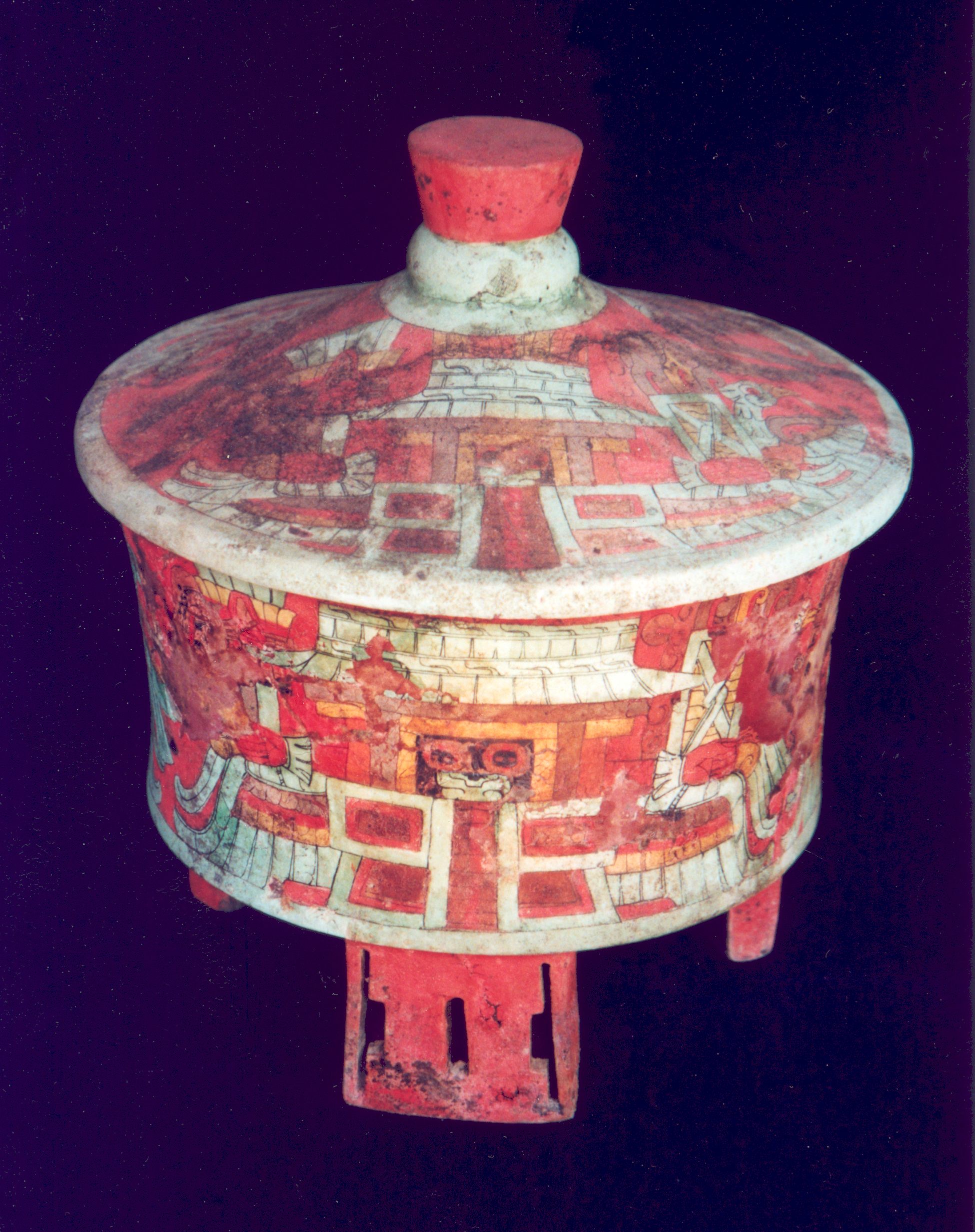I haven’t talked about the pottery since last year.
(Picture from here.)
Mainly, this is because I really don’t want to showcase a lot of failure. While I said last August that getting to functional was a low bar. Getting to actual proficiency takes just as long as anywhere else.
I really like Mesoamerican and southwest Native American pottery. If you go into google images and type “Mesoamerican pottery” you’ll see a whole slew of wonderful things. I’m especially enamored of three-legged bowls. (Again, go into google images and type “Mayan three legged bowls” and you’ll see a bunch.)
I don’t know why these forms speak to me but they do. I’m not much of a painter—and these pots seem to have a lot of decoration—but when I get the form down, I will try to do them justice.
Which brings us to the pots.
These
are my attempts so far, pictured from the side and from above. The inclusion of
my short story collection, Winters are Hard,
is purely for scale. No other reason. That’s a 6x9 trade sized paper back. Ditto
the other book, House
of Birds, placed there only for scale from the top view.
The
first and most obvious problem I’m having is round. This has a lot of
variation but many of these are definitely not round. The situation is improved
on either reduced size or thicker side. Of the two, the thicker sides seem to
work best.
Thin sides are a problem.
My teacher also pointed out that there might be a storage problem here, as well. I do this work once a week. Which means that if I throw a pot on Wednesday, I don’t see it again until seven days later for trimming. So, we put plastic bags over the pots. The plastic bags have a tendency to adhere and warp the pot when the pot is moved. She made some suggestions and that has helped. I’ve also been making thicker bowls. The two in front both represent those improvements.
The other issue I’ve been working on is glazing. One would prefer the pot not look like it was painted by a demented three-year-old. (The spin pot I did for fun. It had already cracked so what the hell?)
The hand prints are something I’ve been playing with. I like the neolithic handprints and hand outlines.
The other issue that’s been frustrating is the glazing. This is most evident in the turquoise pot. It turns out that glaze can run and some glazes—I’m looking at you, turquoise matte—run more than others. This means that the rim of the pot has to so formed as to “catch” the glaze. A thin edge doesn’t hold as well and some glazes slough off, leaving a gritty edge. This can be mitigated somewhat by burnishing the green (unfired) clay with a spoon or something.
Sometimes, I’ll get a form I like and then mess it up with the glaze. Note the small white pot and the gray pot. The forms were okay but the glaze looks bad.
Glazing is dark magic.
Finally, there’s always the issue of scale. You might notice that roundness appears to decrease as size increases. Part of this is true and part, I think, is that it’s just harder to see in the smaller pieces. (The camera lens doesn’t help, either. Notice the bottom two pieces bow slightly to the outside of the picture’s frame. I think this is as much from the lens as from actual roundness.)
Size is a problem for a couple of reasons. For one, it’s harder to estimate (at least, for me) the amount of required clay. On the wheel you can remove clay but it’s hard to add it. So, a big piece can be made into a smaller one more easily than a small one can be expanded into a larger one. That’s part of the reason the larger pieces have thinner edges: I misestimated the amount of clay I needed.
The bottom factors in, too. Here, it’s an area problem. The bottom of a cylinder of 3 inches takes about a quarter of the clay for the bottom of a 6-inch cylinder.
The good news is that one can always remove clay. The process for a thrown pot is 1) throw the pot and 2) trim the pot. Many sins can be overcome by trimming.
The other problem with size is it’s just harder (again, for me) to throw consistently. A small pot is a bit easier to get the same result. Bigger pots are more fragile—there’s just more area to have a problem. It doesn’t help that I have an interesting kind of clumsiness: if I zero in on one facet of the problem, I’ll tend to forget the others. So, when I’m working on one piece of a pot and move my hand, I sometimes forget the rest of the pot is actually there. Bump! Now, I have a dent I need to manage. Clay seems to have some kind of “memory” so a bump may not be repairable.
I’m still working out these pots. I think I have the cylinder form almost down but I’m still working on the legs. If you notice the pot at the top of the post, the legs are beautiful. Gracefully understated with a slight design. My legs are no more than stumps by comparison. Next thing, eh?
I figured I’d give it a year. The year isn’t up yet but I can see the end coming. Then, I’ll have to see.





No comments:
Post a Comment